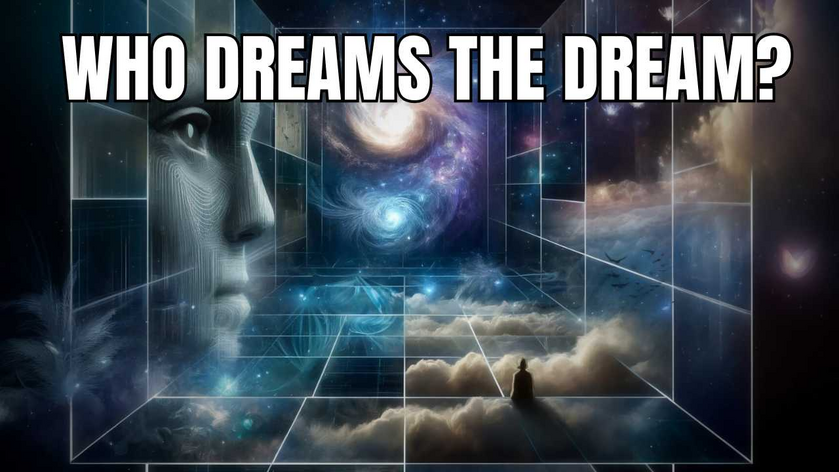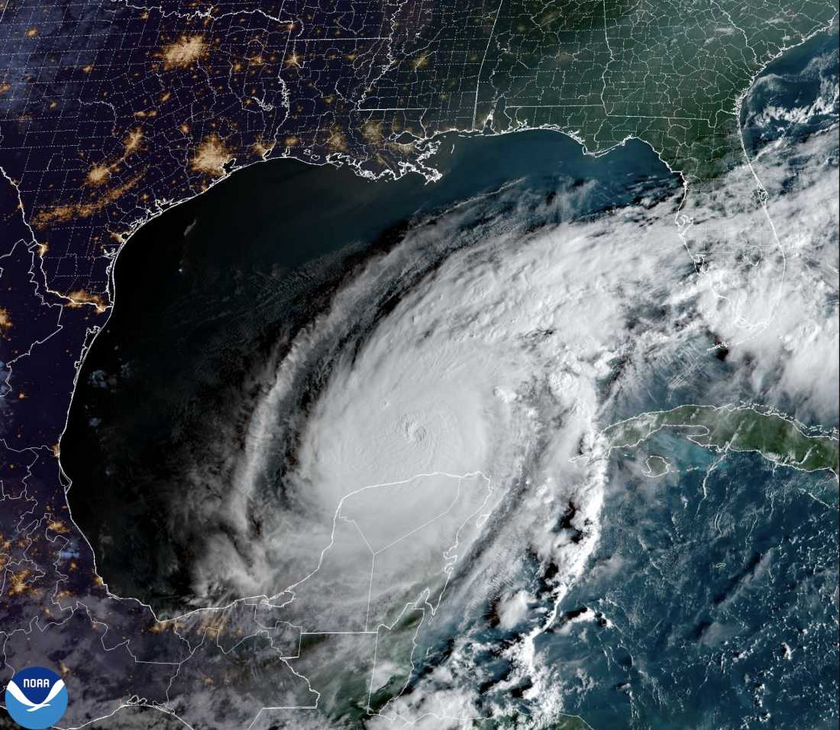Friends,
I'm jokingly calling this the Sunday Sermon, and knowing me you know why I mean this jokingly.
My intuition has been telling me for years now that we have an incredible opportunity, an energy window, that we can use to achieve something most have not even dared to dream about (pun intended)
The pace is increasing like never before and while we can't slow down, we can calm down. It's as if we were standing in the eye of the hurricane where it's sunny and beautiful and we know we have to move with the storm system to stay in the eye.
I have been asking myself more & more - who is dreaming this dream we're living in? Who is "simulating" this? Is it serving us? Can we end the dream?
Well, here are some thoughts on all of that

We're here to speak truth, be authentic & inspire you to create your best possible life.
Next time anyone accuses you of being anti-science...
"We cannot solve our problems with the same thinking we used when we created them." Albert Einstein.
The quote is from the father of one of three theories (Gospels) that conflict with or contradict each other in the Religion of Science.
Each theory seems to work well on its own, but they don’t fit together.
Quantum Mechanics - for things at the microscopic level (atomic and subatomic).
General Relativity - for things at a Cosmic or Large scale (gravity and the structure of spacetime)
Newtonian Physics - for things at a macroscopic level (the motion of objects in our everyday world)
Unified Field Theory (UFT) is a major goal in physics, which is to combine all three Gospels into a single framework that reconciles the three.
Like the Human Genome Project, their UFT is also doomed to failure because they are using the same thinking.
How about the confirmed science and the facts?
In The Science Delusion (also published as Science Set Free in the U.S.), Rupert Sheldrake challenges what he sees as dogmatic assumptions underlying modern science. Sheldrake argues that science has become overly rigid, clinging to materialist and mechanistic views of the universe without questioning or re-evaluating them.
Sheldrake identifies ten core "dogmas" he believes science should re-examine:
The Universe is Mechanical: Sheldrake argues that a machine-like universe is limiting because it ignores the possibility that the universe is more like a living organism, with inherent creativity and spontaneity.
Matter is Unconscious: The belief that only the brain produces consciousness disregards the possibility that consciousness is a fundamental aspect of the universe, potentially present in all matter to some degree.
Laws of Nature are Fixed: Treating natural laws as static ignores evidence suggesting they might evolve, just as biological systems do. This rigidity limits scientific understanding of the cosmos.
The Total Amount of Matter and Energy is Constant: Sheldrake challenges this idea by suggesting that matter and energy may not be closed systems. Unexplained phenomena could imply an open system where creation or transformation occurs beyond known laws.
Nature is Purpose-Less: The belief in a purposeless universe dismisses the possibility that evolution might have direction or goal-oriented processes, which could offer a fuller understanding of natural complexity.
Biological Inheritance is Material: Focusing only on genes and molecular biology as carriers of inheritance may overlook phenomena like “morphic resonance,” where organisms inherit patterns of behaviour and form non-genetically.
Memories are Stored in the Brain: The idea that memories are purely physical overlooks evidence from psychology and parapsychology suggesting memories might reside in fields beyond the brain, allowing for phenomena like shared or past-life memories.
The Mind is Inside the Head: Limiting the mind to the brain fails to explain experiences where consciousness appears to extend beyond the body, such as in distant perception or “mind-at-large” experiences.
Telepathy and Psychic Phenomena are Impossible: Dismissing telepathy as impossible ignores well-documented instances of phenomena that defy conventional explanations and that could reveal new insights into communication and connection.
Mechanistic Medicine is the Only Real Medicine: This view restricts healing to physical interventions and ignores holistic practices that consider the mind, body, and spirit as interconnected, potentially broadening healing methods.
Rupert reviews some of the confirmed science, the facts:
Gravitational Constant (G): Sheldrake points out that the gravitational constant, G, isn’t truly constant. Experimental measurements of G have shown slight variations over time and location, but instead of investigating this, scientists often average these measurements or "fix" the value to make calculations easier. Sheldrake suggests that understanding why G varies could lead to a deeper understanding of gravity.
Speed of Light: Historically, measurements of the speed of light (c) varied slightly in different experiments. To solve this issue, scientists eventually decided to fix the speed of light as a constant by definition. For Sheldrake, this practice sidesteps the possibility that the speed of light might actually vary under certain conditions, which could reveal new insights into the nature of light and spacetime.
Mass of Subatomic Particles: Sheldrake argues that the masses of subatomic particles, such as electrons and protons, aren’t always as constant as believed. Small variations have been observed, but mainstream science often overlooks them, assuming these fluctuations are due to experimental error. Fixing these values in equations, Sheldrake argues, may prevent scientists from noticing deeper, possibly fluctuating qualities of particles.
The Fine Structure Constant: This constant, which describes the strength of the electromagnetic interaction, has also shown slight variation in some measurements over time. Sheldrake suggests that fixing it without further investigation limits our understanding of electromagnetism and atomic interactions, missing potential clues about fundamental forces in the universe.
Universal Physical Constants in General: Sheldrake argues that by treating constants as immutable, science sometimes overlooks the possibility that they might shift in subtle ways across different contexts or eras. Fixing these constants in place can be useful for calculations but potentially blinds science to new discoveries about the dynamic nature of reality.
In the final chapter of Brave New World, Mustapha Mond, one of the World Controllers, explains to John (the "Savage" ) that true scientific exploration and discovery are largely suppressed in their society.
He describes how scientists in this society don’t pursue groundbreaking or fundamental research but instead work within strict guidelines, following "cookbooks" of established knowledge. Mond argues that innovation, especially in pure science, is dangerous because it could disrupt social stability, which is the ultimate goal of their highly controlled world.
From the book Brave New World written by Aldus Huxley was written in 1930
Order David Icke's Groundbreaking New Book THE REVEAL
Paperback 👉🏽 https://amzn.to/3B6T2Vl
Audiobook 👉🏽 https://amzn.to/4dhD0Fb
More from David Icke
👉🏽 https://davidicke.com
👉🏽 https://ickonic.com
My beautiful grandma crossed over this morning.
No sadness, just gratitude.
I remember her unconditional love, the joy we shared on our many walks and the simple little moments.
Grandma grew up during WW2 and saw the kind of suffering and death no child (or adult) should ever see.
Old bread was never thrown away. She would heat up some fresh milk and put the hard and crusty bread in the milk to soften it up.
It’s a poor man’s dinner but I loved it. When I hear comfort food, that’s what I think of.
Her world was fairly small and simple & in it she found a place that was her own.
So long, grandma.
I love you.
See you at home.
Jean



Friends,
I've been reflecting on my journey in the past few days.
As always, when in "nature", things become very clear and transparent.
The truth is - they were all "hard-asses" and I wouldn't have it any other way.
Let me explain in this little audio here - this might be valuable for you as well:-)

Friends,
Kristin and I just had an incredible meeting regarding Hurricane Milton.
We were able to get to the "root of the problem" and we are now actively working on it.
We're not at liberty to discuss details (one day in the future maybe).
I can only say that we were able to confirm certain suspicions.
Please continue your fantastic energetic work on Milton for everyone involved and the highest good of all.
We have now set more important steps in motion and will continue the work for as long as necessary.
For your eyes only, please don't share this outside of this group and platform.
Much Love,
Jean & Kristin



















